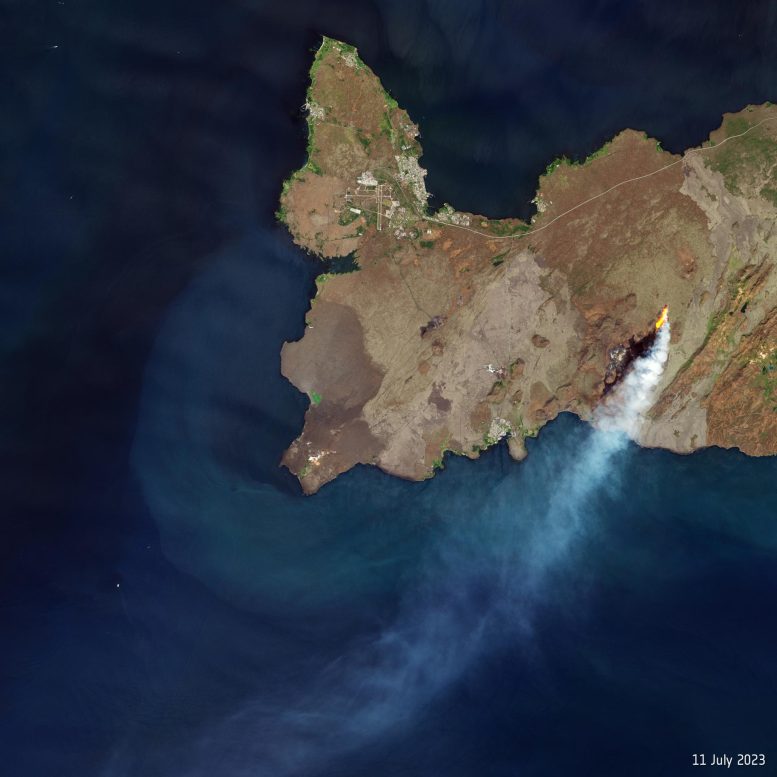
This Copernicus Sentinel-2 image shows the lava and smoke plume blowing from the Litli-Hrútur in a southwest direction. Litli-Hrútur, which translates to ‘Little Ram’ is part of the Fagradalsfjall volcanic area in southwest Iceland. Credit: Contains modified Copernicus Sentinel data (2023), processed by ESA, CC BY-SA 3.0 IGO
The Litli-Hrútur volcano in Iceland erupted on July 10, 2023, following heightened seismic activity. The eruption is being closely monitored using satellite technology, attracting tourists and posing potential health hazards due to sulfur dioxide release.
On July 10, 2023, a volcano some 30 km (20 miles) from Iceland’s capital, Reykjavik, erupted following heightened seismic activity in the area. Satellites orbiting above us have captured the molten lava and smoke plume puffing from the Litli-Hrútur volcano.
Litli-Hrútur, translating to ‘Little Ram,’ is situated in the Fagradalsfjall volcanic area in southwest Iceland. Following roughly 800 years of dormancy, the volcanic area became active in March 2021 with an eruption in the Geldingadalur Valley. Subsequently, a smaller eruption occurred in the nearby Meradalur Valley in August 2022.
A Year of Activity and Monitoring
Almost one year later, a new eruption began at Litli-Hrútur mountain. In the week leading to the eruption, thousands of small earthquakes were recorded in the area, with the largest being a magnitude 4.8 quake, as reported by the Icelandic Met Office.
The eruption continued through until August 5. Tourists and spectators flocked to the site, mesmerized by the ongoing volcanic activity and eager to witness the natural spectacle up close. For those unable to make the journey, the eruption could be experienced from the comfort of their homes through a livestream as well as satellite imagery.
Satellites play a vital role in monitoring volcanoes from space, providing real-time data on volcanic activity, and can even help disaster response efforts post-eruption. Learn how the Copernicus Sentinel satellites can detect and track volcanic gas emissions, changes in ground deformation as well as volcanic ash plumes. Credit: ESA – European Space Agency
The Role of Satellite Technologies
Satellite technologies now make it possible to monitor volcanic activity in even the most isolated corners of the globe. Satellites carry different instruments that provide a wealth of complementary information to better understand volcanic eruptions. Optical satellites, such as the Copernicus Sentinel-2 mission, can image smoke plumes, lava flows, mudslides, and ground fissures.
The image at the top of this article, captured by the Sentinel-2 satellite, shows the smoke plume coming from the Litli-Hrútur volcano on July 11 and shows the plume blowing in a southwest direction. Sentinel-2 is based on a constellation of two identical satellites, each carrying an innovative wide swath high-resolution multispectral imager with 13 spectral bands.
Potential Hazards and Environmental Impact
Although the site of the new eruption is a popular tourist destination, it is also potentially hazardous. New fissures could open without warning, rivers of lava can spew unexpectedly and toxic gas, including sulfur dioxide, can quickly fill the air. Sulfur dioxide can be harmful health, especially when present in high concentrations in the air.
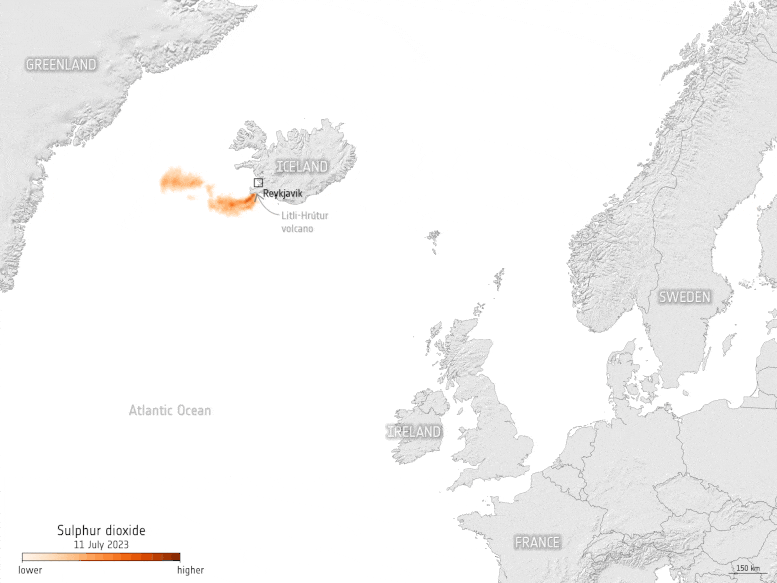
This animation uses data from the Copernicus Sentinel-5P mission and shows the sulfur dioxide spewing from the Litli-Hrútur volcano in Iceland from July 11-13, 2023.
Sulfur dioxide can be harmful health, especially when present in high concentrations in the air. Sulfur dioxide concentrations across the globe can be monitored using the Copernicus Sentinel-5P Volcanic Sulphur Dioxide online platform. Using data from Sentinel-5P, the platform shows the daily sulfur dioxide concentrations coming primarily from volcanic sources.
Credit: Contains modified Copernicus Sentinel data (2023), processed by ESA, CC BY-SA 3.0 IGO
Sulfur dioxide has a relatively short lifespan due to various chemical reactions that remove it from the air. It can be oxidized to form sulfate aerosols or dissolved in water to create sulphuric acid, which then gets washed out by precipitation.
However, when sulfur dioxide is transported into the stratosphere, its behavior changes. In the stratosphere, at higher altitudes, there is less atmospheric mixing, and chemical reactions are less frequent. As a result, sulfur dioxide can persist for longer periods, ranging from weeks to months or even years.
Monitoring Sulfur Dioxide Concentrations
Atmospheric sensors on satellites can identify the gases and aerosols released by the eruption, as well as quantify their wider environmental impact. The animation above shows the sulfur dioxide concentrations from the eruption from July 11-13, 2023, captured using data from the Copernicus Sentinel-5P.
Sulfur dioxide concentrations across the globe can be monitored using the Copernicus Sentinel-5P Volcanic Sulphur Dioxide online platform. Using data from Sentinel-5P, the platform shows the daily sulfur dioxide concentrations coming primarily from volcanic sources.

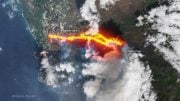
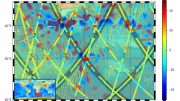
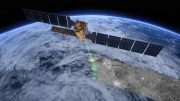
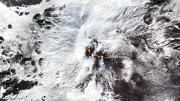
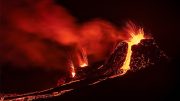
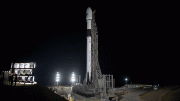
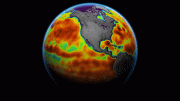
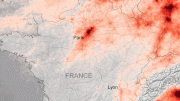
I am a M.S.-level geologist. FWI, Sulfur dioxide does NOT react with water to form Sulfuric acid, H2SO4. Rather, it forms Sulfurous acid, H2SO3. Obviously no one with any college Chemistry was involved in writing nor editing that article.